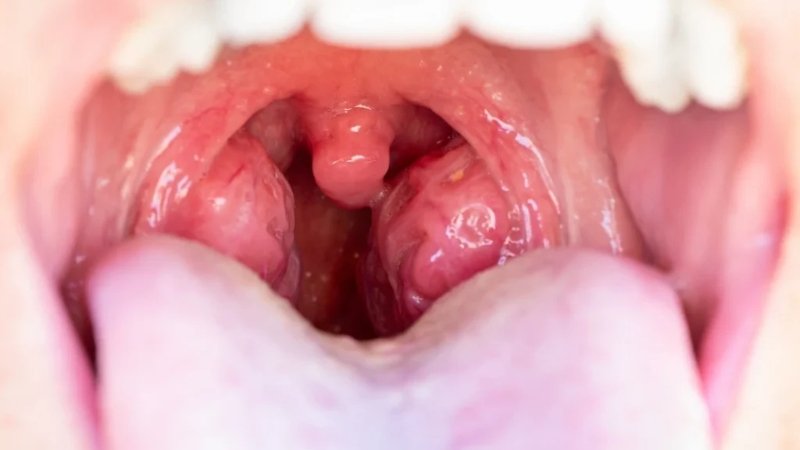Tonsil stones, also known as tonsilloliths, are small, calcified formations in the tonsils that can cause discomfort and bad breath. While visible tonsil stones are easily identified, hidden tonsil stones are more challenging to detect, residing deep within the tonsil crypts. This article delves into what hidden tonsil stones are, how they form, the symptoms they cause, and various methods for diagnosis and treatment.
What Are Hidden Tonsil Stones?
Definition of Tonsil Stones
Tonsil stones are clusters of debris such as food particles, dead cells, and bacteria that accumulate in the crevices of the tonsils. Over time, this material calcifies, forming small stones.
What Makes Them “Hidden”?
Hidden tonsil stones are located deeper in the tonsil tissue, often making them difficult to see or feel. This positioning can make them challenging to identify and treat without proper medical assistance.
Causes of Tonsil Stones
Accumulation of Debris
The tonsils have natural crypts or folds where debris can become trapped. Poor oral hygiene and a buildup of food particles, bacteria, and other matter can lead to stone formation.
Bacterial Growth
Bacteria naturally thrive in the mouth, and the tonsil crypts provide an environment where bacteria can flourish. This can lead to infections and contribute to stone development.
Saliva and Dry Mouth
A lack of saliva can contribute to stone formation, as saliva helps to wash away food particles and bacteria. Dry mouth, often caused by dehydration or certain medications, can increase the risk of tonsil stones.
Symptoms of Hidden Tonsil Stones
Bad Breath
One of the most common symptoms of tonsil stones is halitosis or bad breath. The bacteria in tonsil stones can produce sulfur compounds, leading to an unpleasant odor.
Sore Throat
Hidden tonsil stones can cause throat discomfort and pain, especially when they press against surrounding tissues. This discomfort can mimic a sore throat or even tonsillitis.
Difficulty Swallowing
In some cases, larger tonsil stones can make swallowing uncomfortable or challenging. This can also lead to a sensation of a foreign object lodged in the throat.
Ear Pain
Due to the shared nerve pathways between the tonsils and ears, hidden tonsil stones may sometimes cause referred pain to the ears.
Swelling or Redness in the Tonsils
Infections or irritation caused by hidden tonsil stones can lead to inflammation, making the tonsils appear swollen or red.
Diagnosing Hidden Tonsil Stones
Physical Examination
Doctors may perform a thorough physical examination of the throat to check for signs of tonsil stones, particularly if the patient reports symptoms like bad breath or throat pain.
Imaging Tests
In cases where tonsil stones are not visible, imaging tests such as CT scans or X-rays may be used to detect stones within the tonsils.
Endoscopy
An endoscope, a small, flexible camera, may be used to examine the throat more closely and identify stones deep within the tonsil crypts.
Preventing Tonsil Stones
Good Oral Hygiene
Regular brushing, flossing, and using mouthwash can help reduce the buildup of bacteria and debris that lead to tonsil stones.
Staying Hydrated
Adequate hydration helps to produce saliva, which can naturally rinse away particles that might otherwise accumulate in the tonsils.
Gargling with Salt Water
Gargling salt water can help cleanse the tonsils and reduce the risk of infection. It can also dislodge any small particles in the tonsil crypts.
Using an Oral Irrigator
Oral irrigators or water flossers can be useful in flushing out particles from the tonsil crypts, reducing the likelihood of stone formation.
Treatment Options for Hidden Tonsil Stones
Non-Surgical Treatments
- Gargling: Gargling with warm salt water or antiseptic mouthwash can help to dislodge smaller tonsil stones.
- Manual Removal: In some cases, a cotton swab or water flosser can help dislodge accessible tonsil stones, although this may not be effective for deeper stones.
Medical Treatments
- Laser Cryptolysis: This procedure uses a laser to reduce the size of the tonsil crypts, making it less likely for stones to form.
- Coblation Cryptolysis: Coblation uses radiofrequency energy to alter tonsil tissue, minimizing crypt formation and reducing stone occurrence.
Surgical Treatment
- Tonsillectomy: For recurrent tonsil stones or chronic tonsillitis, a tonsillectomy, or removal of the tonsils, may be recommended. This is often considered a last resort but can permanently prevent tonsil stones.
When to See a Doctor
Hidden tonsil stones are not always problematic, but if they cause persistent symptoms like chronic bad breath, sore throat, or ear pain, a doctor’s evaluation may be necessary. Medical intervention is also recommended if there are frequent infections or discomfort.
Conclusion
Hidden tonsil stones are a common but often overlooked condition that can lead to a range of uncomfortable symptoms. Understanding how tonsil stones form, recognizing symptoms, and exploring both prevention and treatment options can help individuals manage this condition effectively. For those with chronic tonsil stones, consulting a healthcare provider for personalized advice and treatment is recommended.
Craving more? Dive into our next article and satisfy your appetite for knowledge in Kaz Magazine.
